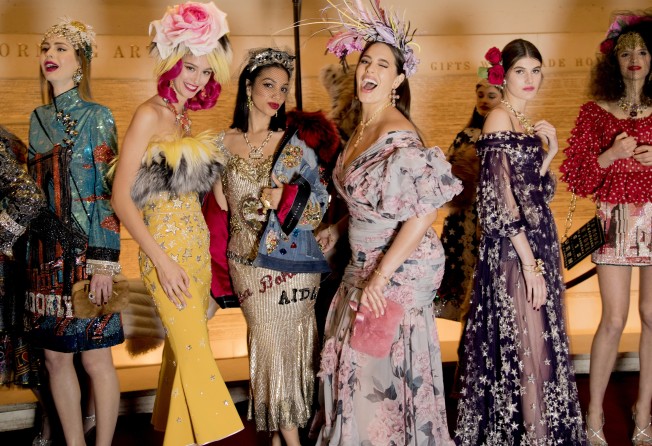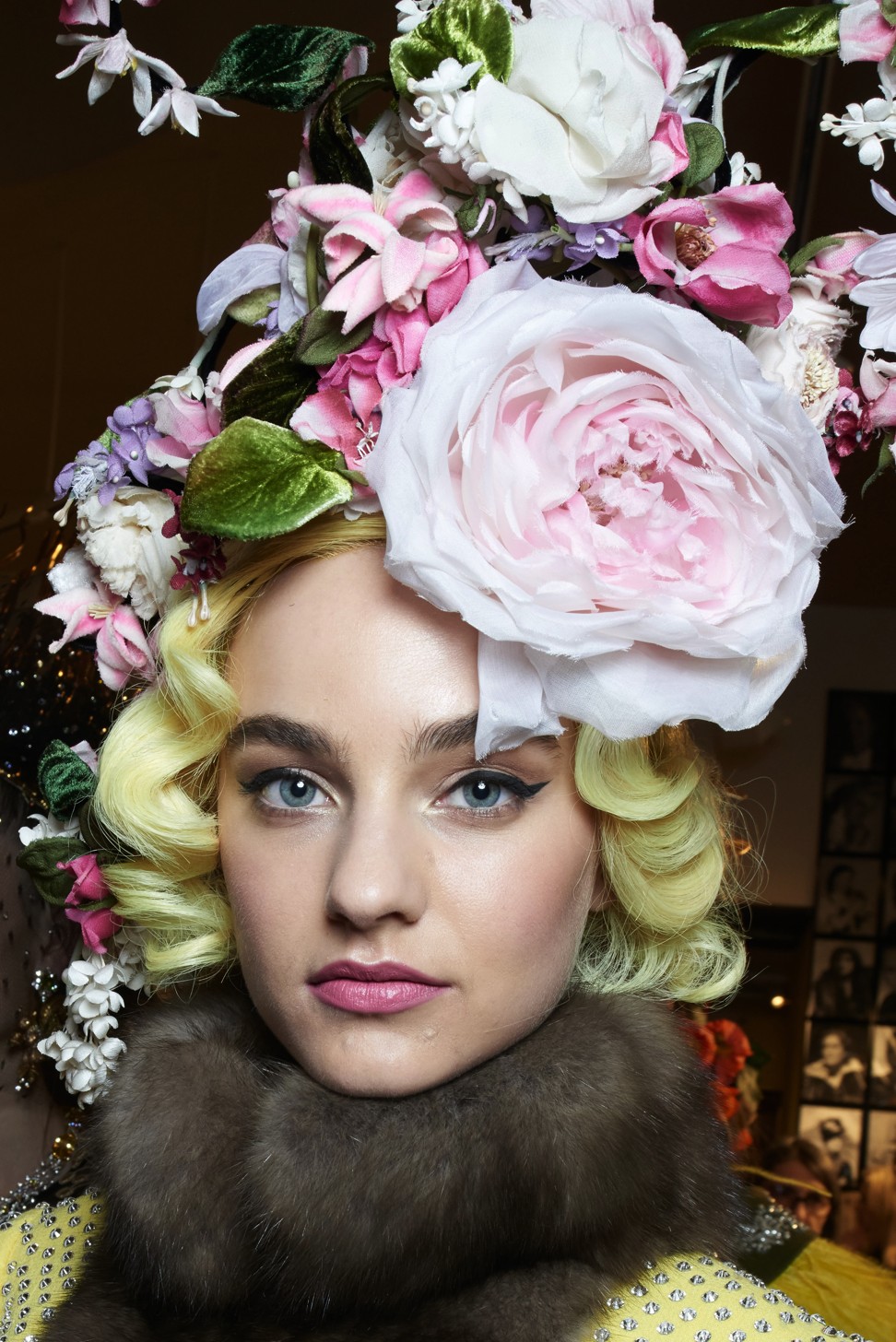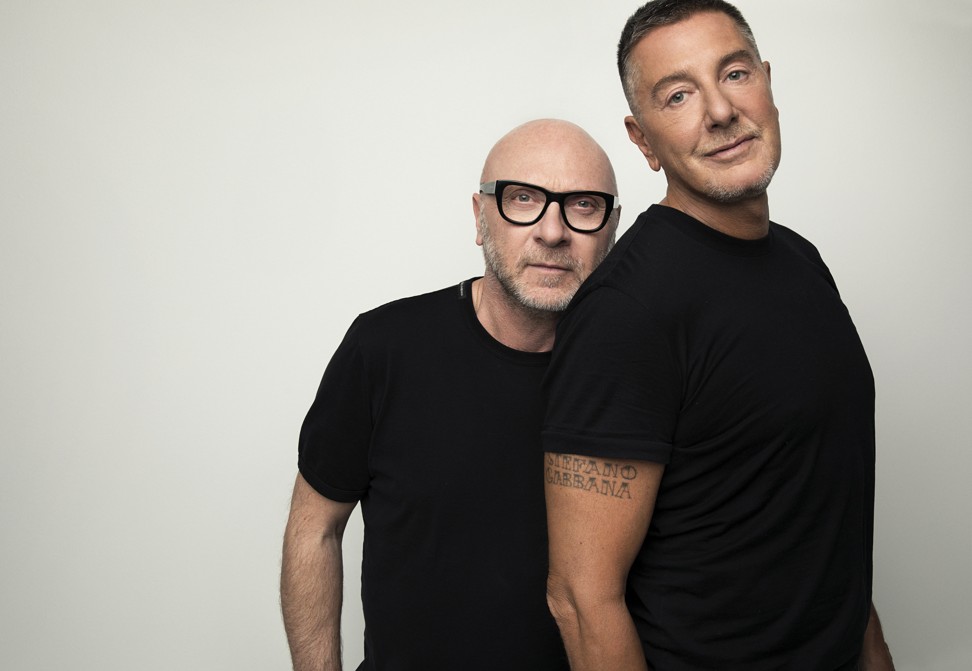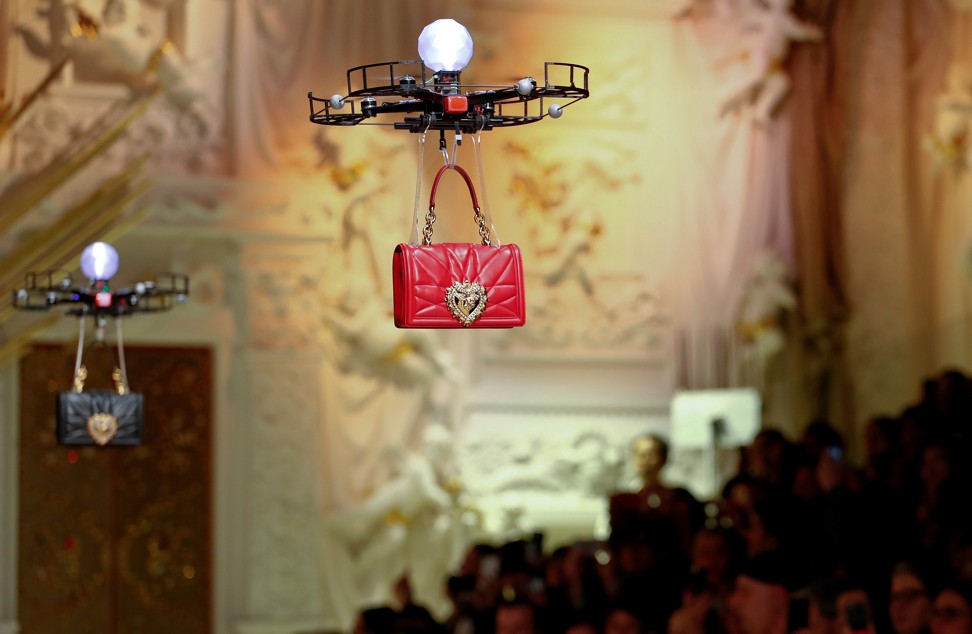Politically incorrect Dolce and Gabbana stay unrepentant as they target world’s ultra rich
Italian designers Domenico Dolce and Stefano Gabbana spark rage on social media – and douse the flames with breathtaking, ever more luxurious fashions

Domenico Dolce and Stefano Gabbana unspool politically incorrect opinions with little more than a shrug.
They evoke rage and fury on social media. Then they douse the flames with some of the most breathtaking fashion imaginable.
At a time when fast and disposable has become the norm, these designers have opted to go ever more luxurious with fashion meticulously made by hand.
And when they brought their glamorous ode to the “American Dream” to this melting-pot city, it was a version accessible to about 1 per cent of the one-percenters.
In other words, they are the perfect designers for this cultural moment, with all of its fractured politics and infuriating contradictions. Go ahead. Tsk-tsk them. They don’t really care.
At the Metropolitan Opera House last month, golden chairs awaited 350 coddled clients.
Pink and lilac roses were tucked into the thick grey branches curled around the brass handrails of the grand staircase.
The guests walked a golden carpet in clothes of fairy-tale opulence (those were gold and diamond buttons, not brass and diamante) and sipped Cristal Champagne.
They relaxed into a level of consumer luxury that makes the good life look like little more than a struggle to survive.
Awaiting the start of the Dolce & Gabbana Alta Moda Show – a spectacle of sable, mink and more diamonds – they were living the best life. Or at least the fashion world’s version of it.
These clients can sate their personal desires because they are fabulously wealthy. The designers are able to indulge their runway fantasies because they don’t answer to investors.
Still, observers can’t help pointing out the ungodly cost of mounting an alta moda show.
“Excuse me, it’s your money?” Dolce replies. “No. OK.”
The designers do not refer to these men and women as customers; that sounds so “commercial”. And for Dolce and Gabbana, this is art. (One of their coats is embroidered with gold thread, like something worn by a raja, a queen or a pope.) But make no mistake: this art is for sale.
Alta moda is a small part of the Dolce & Gabbana business, which encompasses ready-to-wear, accessories and fragrances; and despite its expense, it generates a small profit.
Yet, alta moda’s greatest value is in the message it delivers about the brand, which is that Dolce & Gabbana is among the most creative and masterful in the world.
And its most powerful lesson is about the economic disparity of these times: you really have no idea how great the gulf is between the haves and the have-nots.
Alta moda, the Italian iteration of France’s haute couture, is the most opulent and costly form of women’s fashion. Each garment is one-of-a-kind and fitted to a customer’s specific measurements. It is hand-beaded, often with real gemstones.
The garments must still be wearable. But they are not for the merely rich. These are clothes meant to be worn aboard the 600-foot (182-metre) private yachts of Russian billionaires and Middle Eastern royalty, and behind the security perimeters of walled-off European estates.
The garments delight China’s new generation of moguls and feed a hunger among America’s corporate titans who put fashion in the same category as fine art, rare wines and trophy real estate.
The opening price point for these frocks? As much as US$60,000. Are these incredibly wealthy people paying too much?
“Do you ask the cost of a Michelangelo?” Dolce asks. “You don’t ask the price. Beauty has no price.”
He gestures toward the Lincoln Center’s Josie Robertson Plaza.
“This square is beautiful. Do you ask how much the square costs?”
Dolce, 59, is bald with a grey stubble of a beard and an average build. He speaks in long paragraphs in heavily accented English. He has the more serious, reserved bearing, and an Instagram account on which he has never posted anything.
Gabbana, 56, is the tall one with black hair and a more muscular build, the upkeep of which he documents on Instagram for his 1.2 million followers.
They have known each other for 35 years. Dolce, the son of a tailor in Sicily, taught Gabbana – a fashion-loving graphic designer from a working class family in Milan – how to sketch.
They founded their fashion house in 1985 on the romantic imagery and stereotypes of southern Italy: black-clad Sicilian widows, macho Mediterranean men, voluptuous lingerie models, all anchored by the centrality of family, a devotion to Catholicism, the pleasure of food and the beauty of the Italian landscape.
A vision in white. Link in bio. #DGDevotionBag #DGWomen @davide.gallizio
A post shared by Dolce & Gabbana (@dolcegabbana) on May 22, 2018 at 12:10pm PDT
For a time, they were boyfriend and boyfriend. That relationship ended in 2005, but their business partnership has endured.
Other designers have sold out to large conglomerates; other major brands churn through creative directors every few years.
These two remain at the helm of their privately held “baby”, with sales of US$1.5 billion. (They spent nearly four years fighting accusations of tax fraud in Italy before being found not guilty in 2014.)
And unlike many fashion lines, Dolce & Gabbana has passed up the profit margins to be found in lower-priced goods.
It recently closed its less expensive division, dominated by T-shirts and jeans, and has committed to addressing the unique desires of the few.
This season’s Dolce & Gabbana Alta Moda Show was a rah-rah, red-white-and-blue love letter to America.
At a time when the country itself is divided by questions about what constitutes greatness, the Italian designers still believe in an America as a snow globe of glamour, possibility and freedom.
HAPPY BIRTHDAY MY LOVE ️️️️ @iamnaomicampbell ️️️ QUEEN ICON FRIEND ️️️️ #DGFamily
A post shared by stefanogabbana (@stefanogabbana) on May 21, 2018 at 8:23pm PDT
Freedom is paramount for them, as they often declare as they burrow into controversy after controversy.
They’ve been accused of racially insensitive references in their work, such as describing gladiator-style sandals as “slave sandals” and featuring Moorish – or “blackamoor” – imagery in a ready-to-wear collection.
In one interview they expressed their belief that “family” should be strictly defined as mother, father and naturally conceived children. They called in vitro fertilisation babies “synthetic” and said they didn’t support the right of gay parents to adopt.
Gabbana has also questioned whether the #MeToo movement exaggerates incidences of sexual harassment, and he maintains that sexual harassment is a non-issue in Italy.
“We have a lot of women in our company. [They] are the best,” Gabbana says.
“The woman is more powerful than men.
“All the things about women in [the] US, we don’t have the same thing because we have a lot of respect for women. Our mentality is totally different.”
“Who wears the trousers in the family?” he adds. “It’s the woman in Italy.”
A post shared by stefanogabbana (@stefanogabbana) on May 17, 2018 at 1:21pm PDT
Yet, according to the Italian National Institute of Statistics, an estimated 43.6 per cent of women between 14 and 65 say they have been victims of sexual harassment.
Critics argue that sexual harassment has simply been normalised in Italy; the few women who publicly complain about it are derided.
The designers are emblematic of this cultural moment in which the extremes have moved to centre-stage, the so-called common man is hailed for his wisdom and political correctness has, in some quarters, become the enemy.
“I love to be free. Free, free, free, free, free. I love to say what I think,” Gabbana says.
“I’m not afraid. What I say is not wrong, but it’s out of the system. But it’s really what I think.”
He adds: “You find the truth from ordinary people, not in politics.”
In his spare time, Gabbana is a one-man cheering squad for Melania Trump, the wife of US President Donald Trump.
On Instagram, he showers her with thank-yous whenever she wears the company’s clothes – which is often.
@flotus #melaniatrump #DGWoman #DGStyle THANK YOU #boycottdolcegabbana please
A post shared by stefanogabbana (@stefanogabbana) on May 24, 2017 at 1:52am PDT
He has supported the American first lady while much of the global fashion industry has been diplomatically silent if not actively opposed to the Trump administration.
This has made him the target of social-media trolls and boycott threats.
The designers responded by producing T-shirts emblazoned with “#boycott Dolce & Gabbana” and a video of a mock march.
Gabbana entered the American political fray on New Year’s Day 2017 when he posted a photo of the Trumps at Mar-a-Lago, in Florida, where the first lady was wearing a black Dolce & Gabbana dress decorated with jewelled bows.
His caption made up in heart emoji what it lacked in punctuation – “Melania Trump #DGwoman thank you #madeinitaly”.
Gabbana says: “I post it because I think it’s a beautiful picture. I’m Italian, so I know nothing about Trump ... Well, I know something about Trump, but it was not a political post.
“I post [singer] Rihanna. I post ordinary guys and women. I post what I like.”
He says he was surprised by the backlash, but because he revels in speaking his mind, he did not shrink when the complaints rolled in.
“I know America is a big country and the [division] is big,” Gabbana says. “I don’t post for a scandal. I know I make a controversy, but I’m not afraid.”
We are the first ones to arrive ️️ #metgala #heavenlybodies ️ pic @lup6
A post shared by stefanogabbana (@stefanogabbana) on May 7, 2018 at 1:51pm PDT
“In the end, it’s just a dress,” Gabbana says. “And she bought the dress. We don’t give anything to her.”
Trump has worn the brand on numerous public occasions, including the 2018 White House Governors’ Ball.
During an official visit to Sicily last year, she donned the brand’s richly embroidered floral coat, valued at US$51,500.
Stephanie Grisham, Melania Trump’s spokeswoman
The designers did not invite Trump to the alta moda show, however.
“She’s the wife of the president and I don’t want to do any mistake,” Gabbana says. “But we’d love to have her.”
The appreciation is mutual. “Mrs. Trump admires their work and has been purchasing Dolce & Gabbana since her teenage years,” her spokeswoman Stephanie Grisham said.
“She considers them each an incredible talent who have made a significant impact on fashion around the world.”
A post shared by stefanogabbana (@stefanogabbana) on May 26, 2017 at 8:02am PDT
None of this drama seems to have hurt the Dolce & Gabbana business.
The spring evening of the alta moda show was unseasonably cold with predictions of snow. When the sky cleared, the designers rejoiced; they had fireworks planned. The lingering chill gave the clients an excuse to wear fur.
At other fashion shows, arriving guests typically go directly to assigned seats. But at an alta moda show, no good can come from ranking customers.
Regular guests knew to immediately claim a seat for themselves, deftly draping chairs with a mink or chinchilla seat-saver while Hollywood-handsome waiters topped off their coupes from magnums of bubbly.
Most everyone here was a repeat guest.
Vicky Wang, attired in a long pink Dolce & Gabbana dress that seemed constructed from thousands of individually cut petals, came undone when asked the season of her dress’s origin. Oh, the memories! Who could keep the endless dreamscape of extravagance straight?
Alta moda shows debuted in Taormina in 2012. Since then, there have been shows at La Scala, in Portofino and Venice, and on a rocky outcropping in Capri best accessed by yacht.
This alta moda weekend was stretched out over several Manhattan sites, chosen to reflect the designers’ fantasies about the city – the Met in a nod to their obsession with opera; menswear at the Rainbow Room of the Rockefeller Center, a symbol of Dolce’s fondness for architecture and jazz; and the New York Public Library, the venue of Carrie Bradshaw’s aborted wedding in the Sex and the City film.
At the Met, Isabella Rossellini introduced the collection by reading the Emma Lazarus sonnet from the Statue of Liberty.
Then an operatic soundtrack soared to life and model Karlie Kloss appeared at the foot of the grand staircase, dressed like a bewitching firebird – all red feathers and fearsome grace.
The show covered 100 looks over 30 minutes, including full-length intarsia furs featuring images of the New York skyline and the American flag.
There were red, white and blue bejewelled hoodies and glittering track leggings, lush dresses encrusted in crystals and headpieces that call to mind Lady Liberty.
The models were a diverse group – categories included plus-size, mature, Muslim, and celebrity. Naomi Campbell closed the show, in a corseted ball gown, her head tilted back with enough ravishing hauteur to make guests feel as though had witnessed a fashion moment.
“Domenico and Stefano are just like geniuses,” says Marjorie Harvey, wife of American comedian Steve Harvey and star of her own website, theladylovescouture.com.
Domenico and Stefano are just like geniuses. You never know what to expect from one season to the next
“You never know what to expect from one season to the next ...
“And my baby – [her daughter, Lori, a model] – was in the show!”
Then she glided into the post-show dinner, on the stage in front of a high-drama chiaroscuro set from Turandot.
Tall vases overflowing with mournful, long-stemmed tulips, decorated the tables. The Chianti flowed.
After dinner, guests could buy items in the collection, hanging on racks in a makeshift shop – complete with dressing rooms.
Most people will never lay eyes on the women who ultimately buy and wear these clothes. except perhaps in pictures from some party on a private island.
Perhaps, they will declare the garments beautiful. Or grotesquely decadent.
Regardless, the clothes mean something. They speak of unimaginable wealth and unbound creativity. And they represent the ability of two designers to speak freely – with little worry or concern for what anyone else might think is correct.




